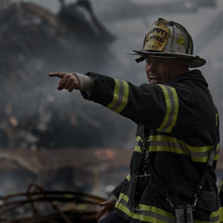In today’s unpredictable world, it is crucial for every workplace to prioritize emergency preparedness. Whether it’s a natural disaster, a technological malfunction, or a security threat, organizations must be ready to respond effectively and efficiently. By investing time and resources into developing a comprehensive emergency response plan, training employees, and conducting regular drills, businesses can minimize the potential impact of a crisis and ensure the safety and well-being of their employees. This article will explore the various aspects of emergency preparedness at the workplace and emphasize the importance of avoiding complacency in times of crisis.
Understanding the Risks and Potential Crises
The first step towards effective emergency preparedness is to identify and understand the risks and potential crises that a workplace may face. These risks can vary depending on the nature of the business, the location, and the industry. For example, a manufacturing facility may face the risk of equipment failure or chemical spills, while an office may be vulnerable to power outages or cyber-attacks. By conducting a thorough risk assessment, organizations can identify the specific hazards they may encounter and tailor their emergency response plans accordingly.
Importance of planning of emergencies.
One of the most important systems for an organisation is to have a well-prepared ERP (emergency response plan) or emergency management plan. An emergency response plan refers to the specific strategy of the organisations implement, in order to reduce the harm or damage due to natural or manmade disasters. This plan includes safeguarding the employees, manpower, and property of the organisation.
Legislative Requirements.
WHS Regulations states the requirement of Emergency Plan Management in Division 4 as below. Section 42 states that duty of an employer to prepare, maintain and implement an emergency plan.
An employer or any person conducting a business or undertaking at a workplace must ensure that an emergency plan is prepared and available for the workplace that provides:
- Emergency procedures that include an effective response to an emergency,
- Evacuation procedure,
- Notifying emergency service organisations at the earliest opportunity,
- First aid,
- Medical treatment,
- Assistance,
- Effective communication between the person authorised by the person conducting the business,
- Implementing emergency procedures,
- Including the frequency of evaluation, information, instruction and training to the relevant workers about implementing the emergency procedures.
Common topics.
Below are the commonest topics to be included in emergency management plan.
- Medical emergency
- Fire
- Release of toxic substance
- Violence
- Chemical spill
- Storms and cyclones
- Pandemic
- Structure collapse
The Consequences of Complacency in Times of Crisis
Complacency in times of crisis can have severe consequences for both individuals and organizations. When employees are not adequately trained or prepared for emergencies, panic and confusion can prevail, leading to injuries, loss of life, and significant damage to property. Moreover, the reputation and credibility of the organization may be at stake if it fails to respond effectively to a crisis. By neglecting to prioritize emergency preparedness, businesses not only put their employees at risk but also jeopardize their long-term success.
Developing an Emergency Response Plan
A well-designed emergency response plan is the foundation of effective emergency preparedness. This plan should outline the specific steps to be taken in the event of an emergency, including evacuation procedures, communication protocols, and the assignment of roles and responsibilities. It should be comprehensive, yet flexible enough to accommodate different types of crises. By involving key stakeholders in the development of the plan, organizations can ensure that it reflects the specific needs and challenges of their workplace.
Training and Educating Employees on Emergency Preparedness
An emergency response plan is only effective if employees are trained and educated on how to implement it. Regular training sessions should be conducted to familiarize employees with emergency procedures, evacuation routes, and the use of emergency equipment. Additionally, employees should be educated on the potential risks and hazards they may encounter in their workplace. This knowledge empowers employees to respond quickly and appropriately during a crisis, reducing the likelihood of injuries and facilitating a swift recovery.
Conducting Drills and Exercises to Test Preparedness
Regular drills and exercises are essential to test the effectiveness of an organization’s emergency response plan. These drills simulate real-life emergency situations and allow employees to practice their roles and responsibilities. By conducting drills regularly, organizations can identify any gaps or weaknesses in their emergency preparedness and take corrective actions. These exercises also help to build confidence and familiarity among employees, ensuring a swift and coordinated response during an actual crisis.
The Role of Leadership in Emergency Preparedness
Leadership plays a critical role in fostering a culture of emergency preparedness within an organization. By setting a strong example and emphasizing the importance of emergency preparedness, leaders can encourage employees to take their roles seriously and prioritize safety. Leaders should also provide the necessary resources and support to develop and maintain an effective emergency response plan. By actively engaging with employees and seeking their input, leaders can foster a sense of ownership and commitment towards emergency preparedness.
Maintaining and Updating the Emergency Response Plan
Emergency preparedness is an ongoing process that requires regular maintenance and updates. As the workplace evolves, so do the potential risks and hazards. Therefore, it is essential to review and update the emergency response plan periodically to ensure its relevance and effectiveness. This includes revisiting risk assessments, incorporating lessons learned from drills and exercises, and staying updated on best practices and industry standards. By prioritizing the maintenance of the emergency response plan, organizations demonstrate their commitment to the safety and well-being of their employees.
Resources and Tools for Emergency Preparedness
Numerous resources and tools are available to assist organizations in their emergency preparedness efforts. Government agencies, such as the Federal Emergency Management Agency (FEMA), provide guidance and resources for developing emergency response plans specific to different industries and types of crises. Additionally, there are online training programs, software applications, and consulting services that can help organizations streamline their emergency preparedness efforts. By leveraging these resources and tools, businesses can enhance their emergency response capabilities and ensure a more resilient workplace.
Conclusion: Taking Action to Avoid Complacency in Times of Crisis
In conclusion, the importance of emergency preparedness at the workplace cannot be overstated. By understanding the risks and potential crises, developing an emergency response plan, training and educating employees, conducting drills and exercises, and involving strong leadership, organizations can minimize the impact of a crisis and protect the well-being of their employees. It is crucial to avoid complacency and take proactive measures to prepare for emergencies, as the consequences of neglecting emergency preparedness can be devastating. By investing in emergency preparedness, businesses demonstrate their commitment to the safety and resilience of their workforce. So, take action today and prioritize emergency preparedness at your workplace.
Learn more about emergency preparedness and ensure the safety of your workplace by consulting with our experts.
WHS training contains learning elements about First aid and Emergency management plan with details that include strategies to eliminate risks to avoid harm or damage that arise as a result of the disastrous event to avoid any harm or damage and to be resilient.
An emergency plan is a detailed written set of instructions that guides the employees on what to do and what not to do in case of an emergency in the workplace. An ideal emergency plan should incorporate the emergency procedures, contact number for the emergencies, and key phone number, which is the most effective response to specific emergencies and should include procedures to be followed when evaluating the premises.
Access Work Health and Safety Books from Amazon: Work Health and Safety












